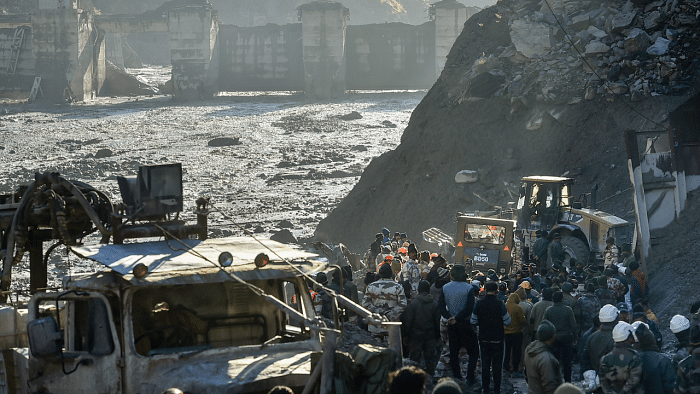
A glacial burst in Uttarakhand’s Chamoli district triggered massive flooding in the Alaknanda river system, resulting in the loss of many lives. The bodies of some 26 victims have been recovered so far. Over 170 others, many of them workers at the National Thermal Power Corporation (NTPC) plant, are reported to be missing. Hydroelectric stations, villages and bridges have been swept away; the entire Rishiganga power project has been destroyed. National and state-level disaster teams, as well as Indian Army personnel, are working round the clock to find the missing and rescue those trapped in tunnels. There is a danger of the floods impacting villages further downstream. The state has repeatedly suffered natural disasters; a multi-day cloudburst in 2013 ravaged Kedarnath, killing over 5,700 people. What caused a part of the Nanda Devi glacier to ‘burst’ or breakaway, sending large volumes of water downstream is not known yet. Global warming, which is known to be melting the Himalayan glaciers at an accelerated pace, could have resulted in lake formation inside the glacier. The pressure built up is likely to have caused the glacier to burst, unleashing the massive surge of water in the Alaknanda river system.
A failure of India’s remote sensing capabilities to locate the glacial lake and the pressure build-up leading to the disaster has been alleged. That may be so, but the underlying causes are much larger. Countless scientific reports have drawn attention to the impact of climate change; a 2019 report warned that the Himalayan glaciers are melting at a catastrophic pace. Extreme weather events have grown in fury and frequency. Yet, climate change is not getting the attention and action it deserves. India’s flawed development policies are contributing to disasters, too. Scores of dams are being built in regions above the altitude of 2,000 metres and in seismically sensitive zones. Though geologists and ecologists have warned against such construction, the government is pressing on with its grand plans for power generation. Experts have also called for a halt to dynamiting of rocks and stone quarrying as such activity is triggering avalanches in the Himalayas. But their pleas seem to be falling on deaf ears.
Upper Uttarakhand already has 16 dams and another 13 are under construction. Its government plans to build another 54 hydel projects there. Insatiable greed is driving development policies that focus on endless exploitation of the mountains. In the process, not only are we destroying the environment but also triggering disasters. The Chamoli disaster is yet another wake-up call to rethink our extractive and exploitative development model. We must heed it.